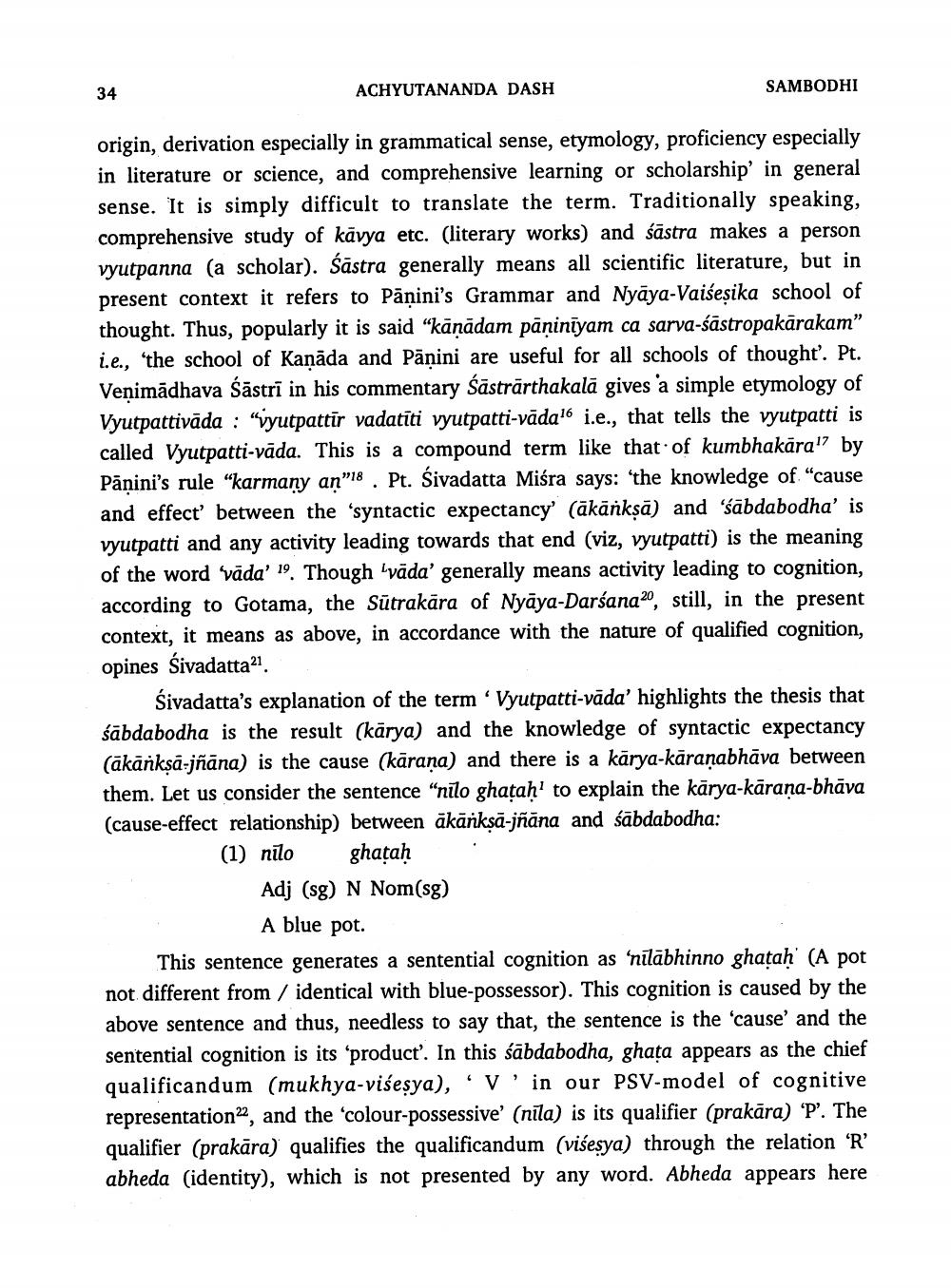________________
34
ACHYUTANANDA DASH
SAMBODHI
origin, derivation especially in grammatical sense, etymology, proficiency especially in literature or science, and comprehensive learning or scholarship’ in general sense. It is simply difficult to translate the term. Traditionally speaking, comprehensive study of kavya etc. (literary works) and śāstra makes a person vyutpanna (a scholar). Šāstra generally means all scientific literature, but in present context it refers to pāņini's Grammar and Nyāya-Vaiseșika school of thought. Thus, popularly it is said “kāņādam pāņinīyam ca sarva-śāstropakārakam” i.e., 'the school of Kanāda and Pāṇini are useful for all schools of thought. Pt. Venimādhava Šāstrī in his commentary Śāstrārthakalā gives a simple etymology of Vyutpattivāda : "vyutpattīr vadatīti vyutpatti-vāda16 i.e., that tells the vyutpatti is called Vyutpatti-vāda. This is a compound term like that of kumbhakāra" by Pāṇini's rule “karmany an”8. Pt. Śivadatta Miśra says: 'the knowledge of "cause and effect' between the 'syntactic expectancy (ākāňkṣā) and sābdabodha' is vyutpatti and any activity leading towards that end (viz, vyutpatti) is the meaning of the word vāda' 19. Though 'vāda' generally means activity leading to cognition, according to Gotama, the Sūtrakāra of Nyāya-Darśana2, still, in the present context, it means as above, in accordance with the nature of qualified cognition, opines Śivadatta21
Śivadatta's explanation of the term “Vyutpatti-vāda' highlights the thesis that śābdabodha is the result (kārya) and the knowledge of syntactic expectancy (ākāňkşa-jñāna) is the cause (kārana) and there is a karya-kāraṇabhāva between them. Let us consider the sentence “nilo ghataḥ' to explain the kārya-kārana-bhāva (cause-effect relationship between äkānksā-jñāna and sābdabodha:
(1) nilo ghataḥ
Adj (sg) N Nom(sg)
A blue pot. This sentence generates a sentential cognition as 'nīlābhinno ghataḥ (A pot not different from / identical with blue-possessor). This cognition is caused by the above sentence and thus, needless to say that, the sentence is the 'cause' and the sentential cognition is its 'product'. In this sābdabodha, ghata appears as the chief qualificandum (mukhya-višesya), 'V' in our PSV-model of cognitive representation, and the colour-possessive' (nila) is its qualifier (prakāra) 'P'. The qualifier (prakāra) qualifies the qualificandum (višesya) through the relation 'R' abheda (identity), which is not presented by any word. Abheda appears here




